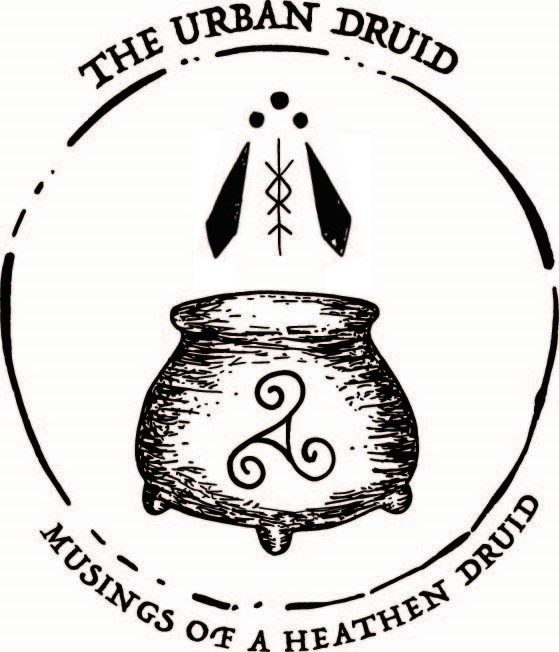The following brief guide should hopefully help people understand what we are doing when we participate in a blot.
The person or people leading the blot is/are the priests (male or female–some women might want to be called a priestess, some a priest). They will be doing the words and working the energy and offerings to those we are honoring in the blot.
Tools Used:
Intention: Intention, energy, and purpose are what give direction and make a ritual happen. When we say the words we say, whether in thanks to the gods, or the priest calling out to the beings honored by using very specific words, our words and actions have intention behind them. This intention is how each of us empower the blot. It is our belief manifesting in a way to make the entire ritual reach our intended targets as well as make our offerings have the energy of our thoughts so we can accomplish the whole reason we’re having the blot in the first place.
The fire: It is our connection between the worlds and helps us communicate to the gods and goddesses, the ancestors, and the landvaettir (land wights/spirits of the land). It can be a bonfire, a fire in a firepit, a fire in a fireplace, or even a candle.
The drinking horn: It is a tool we use to hold the beverage (mead, beer, cider, or something else appropriate) and to serve a focus for our honoring the gods and goddesses, land wights, or ancestors.
The blessing bowl: After empowering the beverage in the horn through our thanks and prayers to the beings we honor with our words and taking a sip to seal our connection to what we said, we pour the leftovers into a blessing bowl. In a group settings, we then use the empowered and leftover beverage to bless the attendees. In a private setting, we skip to the end of the public blot by offering the leftover liquid to the gods and goddesses, ancestors, and landvaettir.
The Basic Steps of a Blot:
1. Hallowing the space:
This step is normally done by our group with a torch hallowing, but some might do a hammer hallowing. The purpose of this step is to protect the space from unwanted landwights or other entities that could bear us ill will. It also helps those in attendance get into the right mindset and prepare themselves for the rest of the blot.
2. The call to the deity or deities you will work with (this includes their kennings):
This is how we make sure not just have any old being show up, but we make sure to invite the exact gods, goddesses, ancestors, or land wights we want to have show up. That’s why the kenning needs to have good detail for the titles and other descriptive ways of describing the being summoned.
3. Statement of purpose of the blót.
This is where the priest will explain the concept behind the blot and why we are celebrating it. Sometimes it will be a reference to historical celebrations of the holiday in question or a statement of what the goal the blot is designed to accomplish.
4. Something read from The Poetic Edda or poetry/prose written for the occasion.
Sometimes the text here will be taken from a saga, one of the Eddas, or sometime else similar. Other times, the text will be written just for this occasion. Either way, the purpose is to weave an honoring or purpose into a form that will connect the idea behind the blot to the attendees or the beings that the blot is honoring.
5. Loading and blessing the horn.
This is simply where the priest pours the beverage of choice into the horn.
This is also where they put the intention and the energy they’ve gathered from performing the blot into the horn so as to empower everyone’s praise and thanks to those honored.
7. Toasting.
The priests drinks first and last, carries horn to each participant, and hands the horn to them.
Every person who holds the horn empowers it with their intention and their words when they toast the gods or goddesses, the ancestors, or the landwights. When they either take a sip from the horn or kiss the side of it, they are making the horn their own and by doing so, powering up the beverage inside so it may become the sacrifice to the beings honored.
8. The blessing of the attendees:
What is left is poured info the blessing bowl and an evergreen sprig is used to bless each participant. The words spoken in thanks or praise have empowered the beverage in the horn, so the remains are used to grant us a blessing from those we honored. This is where the priest will either take the evergreen and tap the liquid to the attendee’s head as a blessing or spray the attendees with the blessing by flicking their wrist with the beverage-covered evergreen. Which ever form of blessing the attendees wants will be given depending up their personal request.
9. The sacrifice:
The remaining contents are given to the gods. Usually, it is poured out onto the base of a tree or the horgr (the altar of stones) while saying some appropriate words.
10. The feast:
The shared meal at a blot is when we, as heathens, connect with one another and by doing so, connect the blot to ourselves. Out of the various pagan groups, heathens are about group connections to their community and worshiping together. It’s also a space where we are feasting with the gods in a way.

